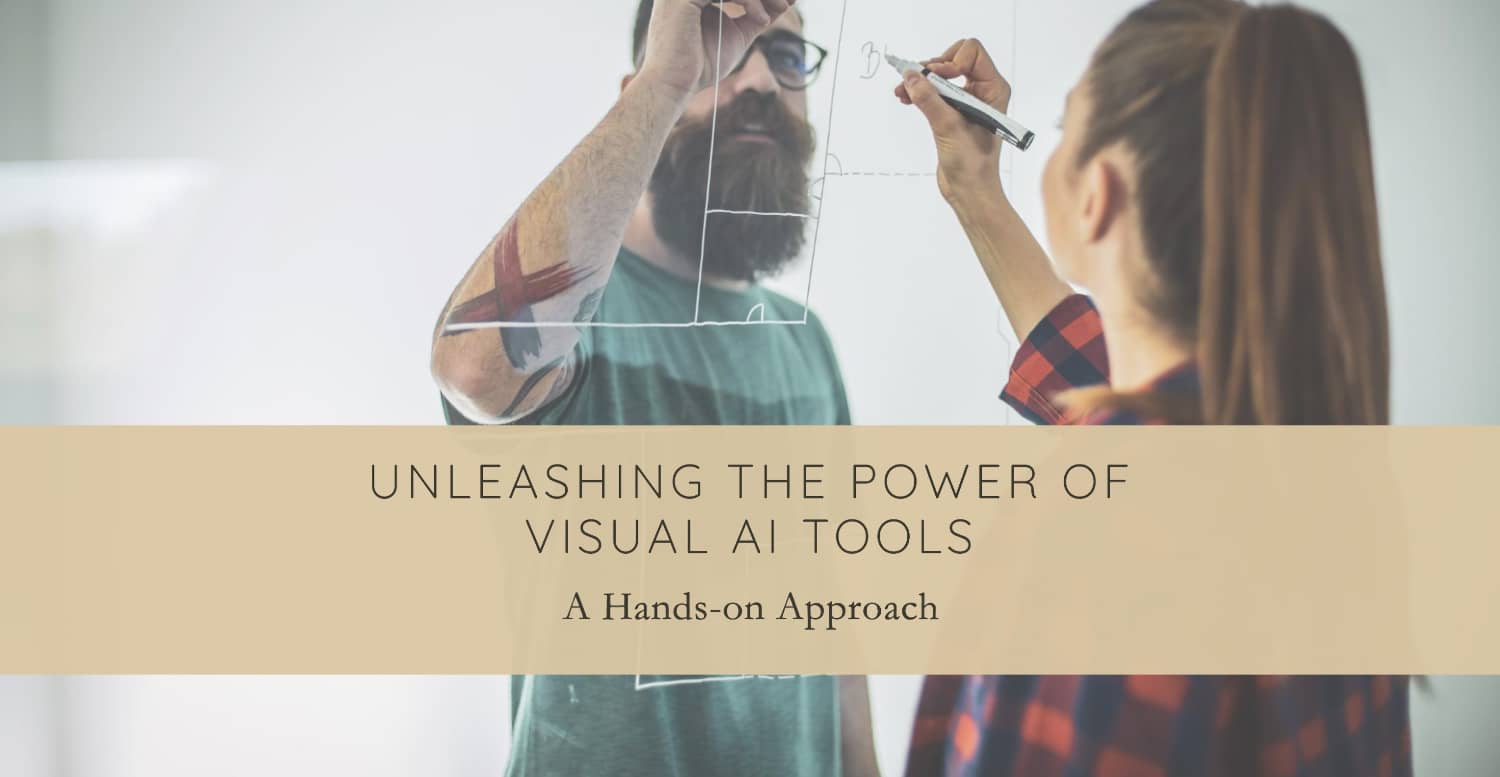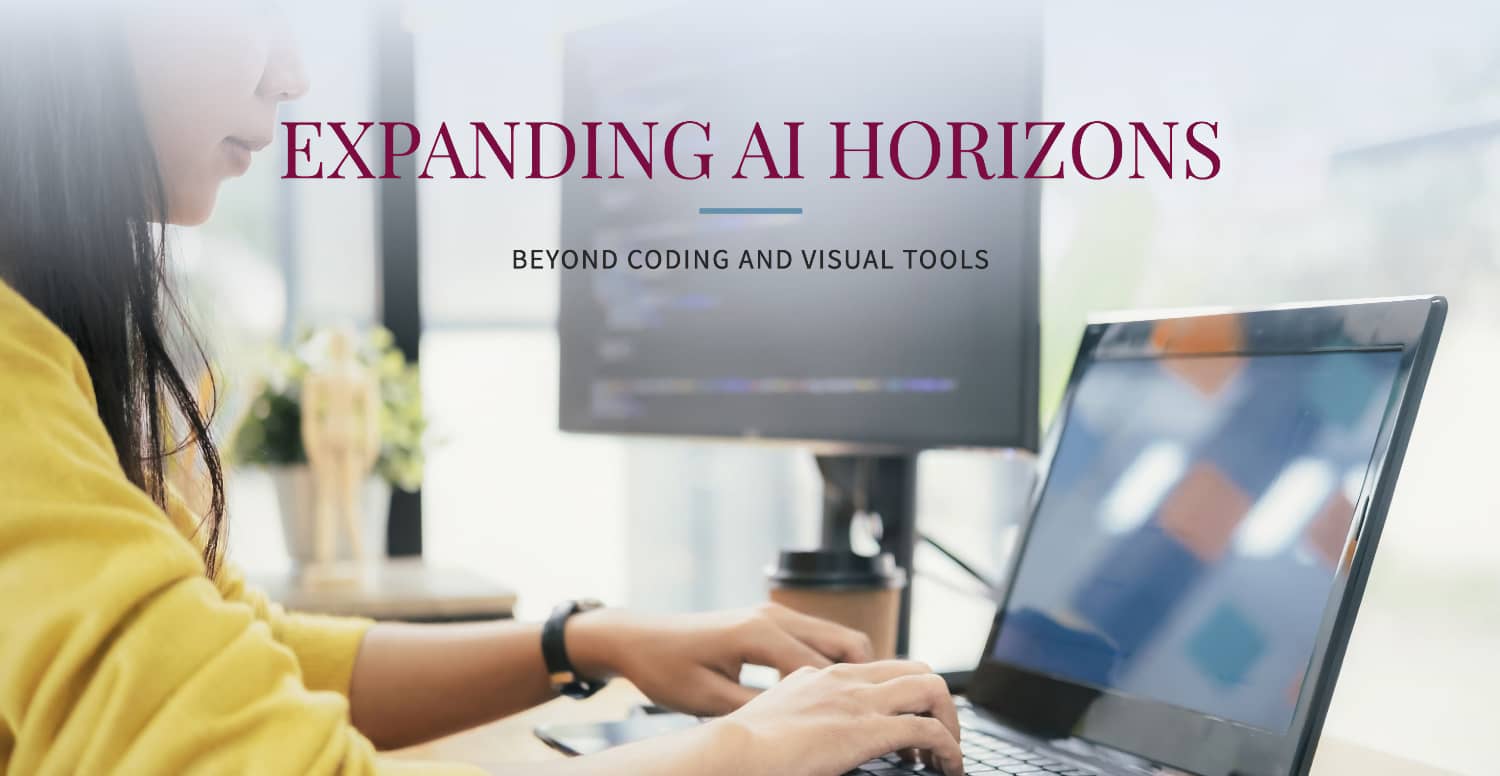Artificial intelligence (AI) has rapidly transformed industries ranging from healthcare to finance. Leveraging machines to demonstrate human-like capabilities in areas like visual perception, speech recognition, and complex decision making, AI is driving unprecedented innovation. However, many believe that cracking the code of AI requires coding skills. This perception has deterred non-technical individuals from unlocking the possibilities of this technology.
The good news is, learning AI no longer mandates coding expertise! With the emergence of intuitive no-code AI platforms and visual AI tools, combined with increased focus on AI education, it is easier than ever to get started with AI. These innovations have brought unprecedented accessibility, allowing anyone to gain AI skills, experiment with models, and build innovative solutions.
In this article, we debunk the coding barrier to AI and provide practical guidance on learning AI without writing a single line of code. Discover the AI tools and resources that can launch you on an enriching AI journey regardless of your technical skills.

Embracing AI without Coding: The Emerging Trend
The perception that coding expertise is mandatory for AI learning is now a thing of the past. AI technology has advanced to a point where intuitive drag-and-drop interfaces and visually engaging platforms are making AI accessible even without traditional coding skills.
The Rise of No-Code AI
Leading tech innovators have recognized non-coders as a crucial constituency and an untapped resource for advancing AI innovation. Platforms like Google Cloud, Microsoft Azure, and Amazon Web Services now offer no-code AI solutions that allow users to develop AI models through simple graphical interfaces and pre-built components.
With these no-code tools, non-programmers can train AI models, analyze data, optimize outcomes, and deploy solutions by simply assembling, connecting, and configuring ready-made blocks. The complexity of coding is completely abstracted away, lowering the barrier to AI education significantly.
Empowering Visually Engaging AI Experiences
Visual AI experimentation tools like TensorFlow Playground, IBM Watson Studio, and Google AI Experiments are also gaining popularity. These tools provide an interactive canvas for learn artificial intelligence through engaging visualizations of machine learning concepts.
Users can tweak parameters on the visual interface and instantly view the impact on an AI model, developing an intuitive understanding of how different algorithms work. By demystifying AI constructs visually, these platforms are bridging the gap in AI comprehension for non-coders.
Online Programs Democratize AI Skills
Educational institutions and platforms are also addressing coding barriers by offering AI fundamentals programs for non-technical learners. Simplilearn, Udacity, and other e-learning portals offer a multitude of AI courses covering AI concepts theoretically without coding requirements. Such programs are enabling professionals across various fields to acquire much-needed AI skills driving broader adoption of AI.
As technology democratizes access to AI education beyond coding skills, it unlocks tremendous opportunities for organizations to harness new ideas and unconventional approaches of non-programmers for impactful AI innovation.
Exploring No-Code AI Platforms: A Gateway to AI Creation
No-code AI platforms are spearheading an AI revolution for non-programming users. Let's explore some leading options that are expanding AI opportunities regardless of coding proficiency.
Google Cloud Vertex AI
Part of Google Cloud's suite of AI products, Vertex AI allows users to implement machine learning workflows through an intuitive web-based environment. Its drag-and-drop interface enables learning artificial intelligence users to easily integrate, build, train, and deploy models using pre-existing components.
Key features include:
AutoML for automating ML lifecycle
Managed datasets and pipelines
Integration with other GCP services
Options for advanced users to customize code
Microsoft Power Platform
Microsoft Power Platform makes AI model development accessible through low-code interfaces within apps end users already utilize daily, like Microsoft Teams. Leveraging drag-and-drop features and pre-built AI connectors, anyone can add AI capabilities without intensive coding.
Key features include:
Drag-and-drop interface to embed AI
Connectors to Azure Cognitive Services
Option to view automatically generated code
Tight integration with Microsoft suite
Amazon SageMaker Studio
A fully integrated development environment (IDE) to build, train, debug, deploy and monitor AI/ML models. SageMaker removes infrastructure setup and management challenges through web-based notebooks, enabling users to seamlessly take models from concept to production without exhaustive coding.
Key features include:
Managed Jupyter notebooks
Drag-and-drop visual workflow builder
AutoML model building capability
Integrated GitHub code editor
H20 Driverless AI
H20 Driverless AI is an easily accessible tool for automatic machine learning, allowing non-programmers to immerse in ML techniques. It has an intuitive graphical user interface along with capabilities ranging from automatic feature engineering to model accuracy testing.
Key features:
Automated feature engineering
Visual interface to view models
Machine learning interpretability
Supports major programming languages
These platforms and more are providing accessible gateways into AI innovation beyond coding skills. Unleash your AI potential using these no-code tools.

Unveiling the Power of Visual AI Tools: A Hands-on Approach
Visual AI experimentation tools provide interactive and engaging gateways for non-coders to gain tangible hands-on exposure to AI techniques. Let's explore some popular visual tools revolutionizing AI learning.
TensorFlow Playground
Created by Google, TensorFlow Playground allows users to visually build neural networks and immediately see results, enabling intuitive experimentation with key AI and ML concepts. Users can adjust network architecture, activate functions, and tune hyperparameters through simple slider adjustments and view live graph updates.
Key Features
Interactive visual interface
Ability to tweak parameters and visualize impacts
Library of machine learning concepts
Export model architecture as Python code
IBM Watson Studio AutoAI
IBM Watson Studio AutoAI experiments demystify the process of training AI models with ML through an easy-to-use visual interface. Users can upload data, choose a model type, train parameters, and directly monitor model-building, eliminating coding struggles.
Key Features
Automated model building capability
Intuitive visual interface
Explainability tools to interpret model results
Seamless model deployment options
Google AI Experiments
AI Experiments provide hands-on exposure to AI concepts through fun, interactive visual experiments. Users can navigate through various labs to see AI capabilities in action and also create drawings or patterns to train models, reiteratively improving understanding of core techniques.
Key Features
Engaging visual representation of AI capabilities
Intuitive experiential activities and simulations
Practical application of basic AI/ML concepts
Overview educational resource for AI
Immerse yourself in interactive AI discovery with these innovative tools that bring complex AI concepts to life visually for coders and non-coders alike.

Expanding AI Horizons: Beyond Coding and Visual Tools
While no-code platforms and visual tools provide accessible avenues to AI, expanding your AI skills repertoire involves developing foundational competencies through additional techniques.
Embracing Theoretical Foundations
Grasping the academic principles underlying AI establishes bases for practical application. Enrolling in online courses focused on exposing the mathematical and statistical fundamentals behind AI algorithms allows you to complement hands-on platforms.
Resources like Simplilearn, Udacity, and EdX offer coding-independent curriculums covering AI concepts theoretically. Completing such courses develops analytical clarity for translating visual tool experimentation into applied solutions.
Building Logical Reasoning Muscles
Practice logical reasoning techniques to strengthen core competencies for excelling in AI. Skills like pattern identification, inference drawing, inductive/deductive reasoning, and spatial visualization prepare you to better contextualize experimental observations.
Seeking out brain training games, puzzles, and aptitude building resources facilitates success with AI platforms using logical aptitude. This sharpens analytical abilities for interrogating AI models and deriving actionable insights.
Data Storytelling Proficiency
Using AI tools effectively involves both creating models and contextualizing their data narratives convincingly. Building data literacy around deriving meaning from AI data equips you to convert observations into impactful conclusions.
Online data storytelling guides provide techniques for compelling data framing, helping non-coders communicate AI data patterns persuasively to decision-makers. Coupled with AI platform skills, data narrative mastery facilitates AI solution development.
Expand your AI learning ecosystem through multifaceted competency development beyond coding alternatives.
Democratizing AI Through No-Code
The emergence of intuitive no-code AI platforms has transformed artificial intelligence from an exclusive domain of tech experts to an accessible technology for all. These tools have opened the doors for non-programmers to harness the power of AI, fueling rapid adoption across businesses.
By abstracting away the coding complexities through visual interfaces, no-code AI solutions enable users to build, deploy and integrate AI systems with ease. Whether it's creating predictive models, building chatbots, or generating insights from data, no-code tools put the power of AI into the hands of non-technical employees.
Empowered by no-code AI, professionals across functions like marketing, sales, HR, design, and more can now actively drive AI-based innovation. The simplicity, agility, and cost-effectiveness of these platforms has also allowed companies of all sizes to pursue their AI visions.
As no-code AI continues maturing, it paves the path for democratized access to artificial intelligence - making AI literacy and adoption more equitable across businesses and society. The no-code revolution has broken the barriers to entering the AI world regardless of one's coding skills or technical background.


